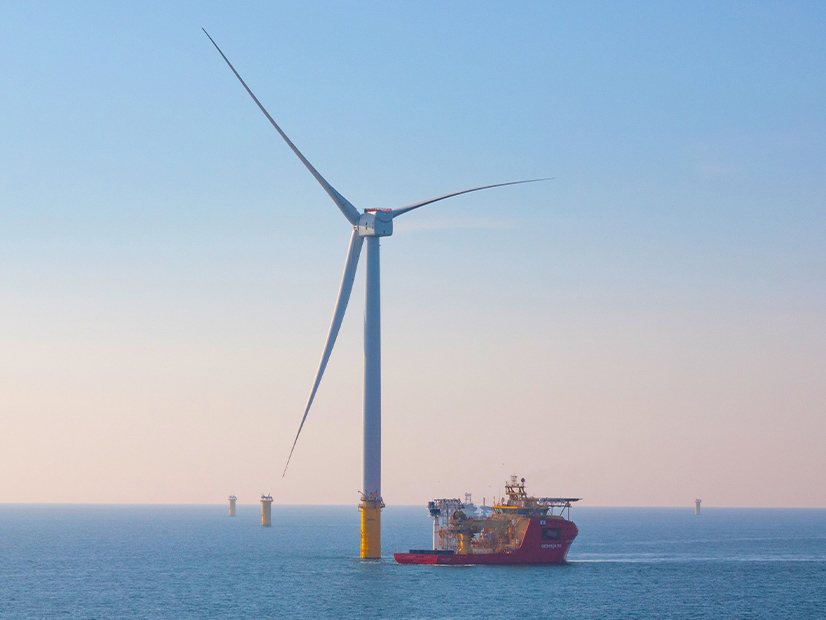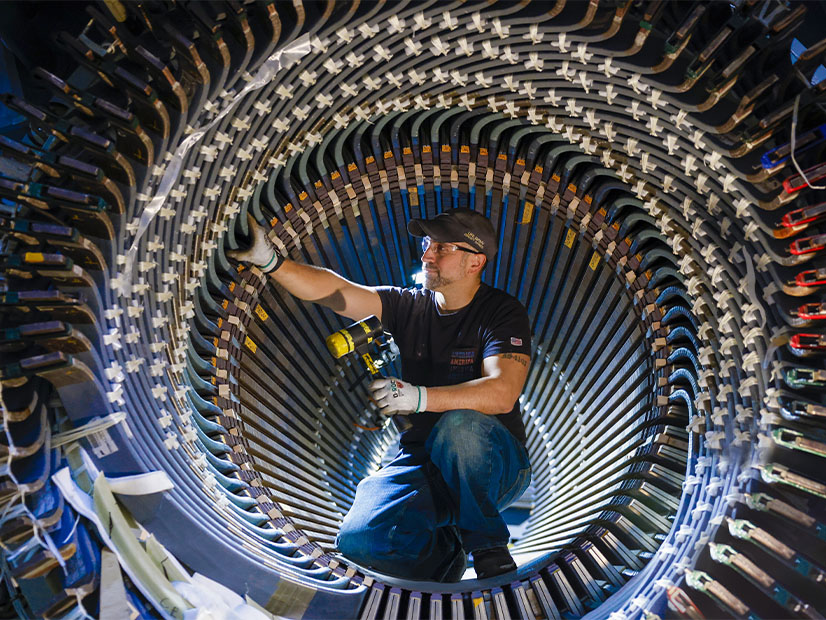
A manufacturing defect has been identified in the high-profile failure of a wind turbine blade off the Massachusetts coast.
The defect is believed to be isolated, but the other hundred-plus blades made at the same factory will be inspected to be sure, GE Vernova told financial analysts July 24 during a conference call about its second-quarter earnings.
The company said its wind-power operations continue to operate at a loss, and the Vineyard Wind 1 blade failure on July 13 could expose it to potentially significant claims for monetary damages, but it still expects its wind business to become profitable in 2025.
Accelerating growth for its gas power business — including orders for 49 gas turbines totaling 9 GW of nameplate capacity in the first half of 2024 — gave GE Vernova a profitable quarter.
The company expects gas turbine orders to be even higher in the second half of this year.
Wind Problems
The breakup of iconic conglomerate General Electric concluded at the end of the first quarter of 2024, when its power components spun off as GE Vernova from what is now known as GE Aerospace.
GE Vernova is heir to 130 years of electrical innovation founded by Thomas Edison in Schenectady, N.Y., and it posts some impressive numbers: Its 7,000 installed gas turbines are the largest fleet worldwide by megawattage, the company boasts, while the 55,000 wind turbines bearing its name exceed 100 GW of nameplate capacity and hold the largest segment of the U.S. market.
But there have been some quality control problems in the wind business.
In an October 2022 call, General Electric CEO H. Lawrence Culp Jr. spoke of the warranty costs that had become a drag on the financials of what then was GE Renewable Energy.
In mid-2024, two AEP subsidiaries — Public Service Co. of Oklahoma and Southwestern Electric Power Co. — sued GE Renewables North America LLC in a New York court.
They claimed numerous material defects had arisen within two to three years of start of operation of a fleet of 426 turbine sets at three facilities in Oklahoma, knocking a significant number out of service and suggesting expensive repairs ahead for many others. The lawsuit describes a damaged blade being “liberated” from its hub in May 2023.
The Vineyard Wind blade failure was a much higher-profile affair, given the controversial nature of offshore wind, the number of opponents fighting to keep it from developing as a U.S. clean energy sector and the summertime beach closures that resulted as fragments washed ashore. (See Blade Failure Brings Vineyard Wind 1 to Halt.)
In its communications about the incident, Vineyard has emphasized that it was a GE Vernova equipment failure.
GE Vernova CEO Scott Strazik said July 24 that the search continues for the root cause of the Vineyard Wind failure but that a “manufacturing deviation” has been identified in the blade that buckled and disintegrated. No design flaw has been identified, nor any connection to a recent blade failure at the Dogger Bank Wind Farm in England, which was blamed on an installation error.
The Vineyard Wind blade was fabricated by GE Vernova subsidiary LM Wind Power. Strazik said the quality assurance process should have caught the defect, so it will reinspect the roughly 150 other offshore wind blades that have been manufactured at the same factory in Gaspe, Quebec.
Construction has been halted on Vineyard as the investigation continues, with about a third of the turbines installed. But Strazik said installation work continues at Dogger.
Strazik indicated the company is looking to make more money in future offshore wind contracts.
“Going forward,” he said, “we will remain highly selective on new offshore orders, focused on achieving substantially higher pricing and disciplined commercial terms.”
The finances of GE Vernova’s wind business were a recurring theme on the call.
“Right now, wind remains the most challenging segment,” Strazik said.
And that is not just offshore — onshore wind customers are navigating challenges with permitting delays and higher interest rates. Then there are the defects.
“We are nearly two years into our onshore wind quality improvement program, and we are making progress, with no new significant issues identified,” he added.
GE Vernova is trying to accelerate updates to the existing onshore fleet, adding crews in the field and lining up more cranes. A blade inspection robot has been used to enhance the manufacturing process, and the company is optimistic about the future.
“Longer term, wind should play a critical role in the energy transition,” Strazik said.
Gas Growth
In the shorter term, GE Vernova is doing a brisk business selling and servicing equipment that could continue to burn natural gas for decades.
The company announced July 10 it would expand generator production and add more than 150 jobs at its ancestral home, the Schenectady campus that General Electric shrank relentlessly over the course of decades.
A financial analyst asked if the sharp growth in gas power orders is due to GE capturing a greater percentage of the existing market or the market itself expanding.
“It’s a combination of U.S. orders and global orders,” Strazik replied. “We’re not in a place today where this is one transaction, one market.”
Demand for electricity is rising amid the growth of data centers and the push to electrify large segments of the economy. CFO Ken Parks said: “Looking ahead, we see increased demand for gas as a reliable source of baseload generation, which is resulting in incremental growth opportunities for both gas equipment and gas services over the medium to long term.”
Another analyst asked if GE Vernova could meet the rising demand for gas equipment that utilities are voicing.
GE Vernova’s facilities have capacity to grow, Strazik said, but there are chokepoints.
“We do have challenges and need to work across our supply base and supply chain to gain access to more parts — think castings and forgings. That very well may lead to some investments we need to make to support this growth on a go-forward basis.”
GE Vernova’s smallest business segment by revenue, electrification, reported strong demand and significant revenue growth for the second quarter.
For the three months ended June 30, GE Vernova reported $1.28 billion in net income on total revenue of $8.2 billion, yielding diluted earnings per share of $4.65. This compares with revenue of $8.1 billion in the same quarter of 2023 and a net loss of $149 million, or $0.55 per share.
GE Vernova stock closed 4.5% lower July 24. It is part of the S&P 500 index, which was down 2.3% for the day.



